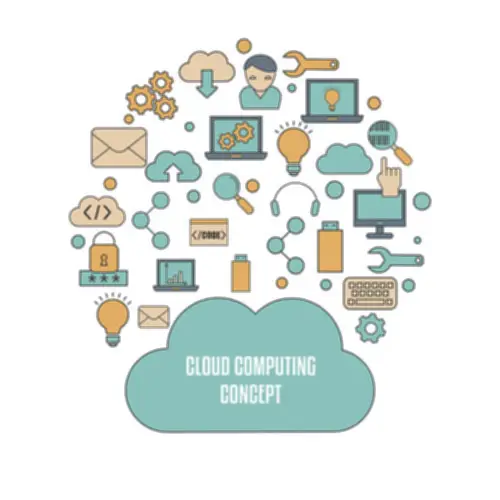Some of the compilers utilized in embedded methods are the GNU C compiler(GCC), Keil compiler, BiPOM ELECTRONIC, and Green Hill Software Program. The embedded methods use Linux, Yocto, Android, NucleusRTOS, TreadX, QNX, Home Windows CE, etc. They are built to carry out strictly within the given time vary, making them best for real-time application performance. To generate output, they connect to internet servers through wired or wireless networks. They embody a real-time operating system that screens, reacts, and manages an outdoor setting represented by a devoted kind of operating system, RTOS. In addition to these technical skills, embedded systems developers ought to possess sturdy problem-solving talents, attention to detail, and the ability to work in multidisciplinary groups.

Embedded Systems Purposes
These elements embody networking protocol stacks like CAN, TCP/IP, FTP, HTTP, and HTTPS, and storage capabilities like FAT and flash reminiscence administration systems. If the embedded gadget has audio and video capabilities, then the suitable drivers and codecs will be present in the system. In the case of the monolithic kernels, many of these software layers may be included within the kernel. In the RTOS category, the availability of further software program components depends upon the commercial offering. A graphical view is presented by a bunch PC device, primarily based on a recording of the system behavior. The hint recording can be performed in software, by the RTOS, or by particular tracing hardware.
The alternative of embedded operating system, which organizes and controls the hardware, often dictates the additional required embedded hardware parts. The idea of embedded systems dates back to the mid-20th century, with the development of early computing units. One of the first recognisable embedded techniques was the Apollo Steering Computer, designed within the Nineteen Sixties to help NASA’s Apollo missions. This pioneering system showcased the potential of integrating computing energy immediately into larger systems for particular duties. Over the decades, developments in microprocessor and microcontroller technologies have considerably influenced the evolution of embedded methods. The Eighties and 1990s saw a surge in the use of embedded systems in consumer electronics, automotive industries, and telecommunications.
Nonetheless, it is usually potential to upgrade the softwareclosesoftwareThe programs, purposes and information in a pc system. For example, health trackers are embedded systems, but the software program can typically be upgraded by connecting the system to a PC and installing the new software. The PCB is a vital part throughout the electrical circuit of embedded methods.
Processors In Embedded Systems
The software program structure of an embedded system is often organised into several layers, every serving a definite role in the system’s operation. At the base, the firmware layer is crucial, consisting of low-level software program that immediately interacts with the hardware parts. It offers the foundational directions that control the microcontroller’s operations.
Typically, they are embedded inside different units, starting from household home equipment like washing machines to advanced industrial equipment. The primary objective of an embedded system is to manage the device’s operations efficiently, often in real-time. This specialised focus on dedicated functionalities distinguishes embedded systems from traditional computing devices, making them important in varied functions the place reliability and performance are crucial.
As these systems turn out to be https://www.globalcloudteam.com/ more pervasive, concerns round security, power management, and sustainability will be paramount, guaranteeing they meet the rising demands of a dynamic technological landscape. Ultimately, embedded techniques will stay a cornerstone of technological development, driving progress and opening new potentialities for innovation in an increasingly interconnected world. It is made up of integrated circuits and its talents include doing mathematical and logical computations and controlling the devices related to it. The core by itself cannot do much, and it wants another devices to serve a useful function.

This is the level at which the system is usually considered to have an working system kernel. Relying on how much functionality is required, it introduces more or less of the complexities of managing multiple duties running conceptually in parallel. In this design, the software program merely has a loop which displays the input gadgets.
What Are The Vital Thing Components Of Embedded Systems?
- Usually, developers working with desktop environments can run both the code being labored on and separate debugger functions that can monitor the embedded system that programmers usually can’t.
- Whereas some embedded methods may be comparatively easy, others have gotten extra complex and may both supplant human decision-making or provide capabilities beyond what a human may provide.
- This system operates independently and reveals data on the hooked up system without having a number system like a pc.
- In embedded techniques, D-A converters are used in numerous applications, together with audio systems, knowledge acquisition, management methods, motor control, communication techniques, and instrumentation.
Moreover, embedded techniques often must interface with human users, requiring intuitive enter and output strategies, such as touchscreens or button controls. By attaining efficient integration and interfacing, embedded techniques can perform their specialised features within broader techniques, ensuring interoperability and enhancing overall system functionality. Embedded techniques are very important because of their ability to offer specialised performance within quite a few devices, enhancing efficiency, reliability, and consumer expertise. Their importance spans various industries, underscoring their versatility and indispensability. In shopper electronics, embedded systems power everyday home equipment corresponding to microwaves, washing machines, and sensible TVs, enabling automated and seamless operations. In the automotive sector, they are integral to the functioning of contemporary automobiles, managing techniques like engine management, infotainment, and advanced driver-assistance systems (ADAS).
Requirements outline the purpose and functionality the system wants to achieve, typically influenced by the intended software and end-user needs. These can embody efficiency metrics, such as processing speed and power consumption, alongside practical necessities like input/output capabilities and connectivity features. Specs, then again, translate these necessities into detailed technical descriptions, outlining the mandatory hardware and software program elements, interfaces, and protocols. This entails choosing appropriate microcontrollers, reminiscence types, and peripheral interfaces. Moreover, non-functional requirements, including reliability, scalability, and value constraints, have to be thought-about.
These systems collect information (e.g., heart rate or glucose levels), process it in real-time, and ship lifesaving therapies or alerts. The embedded techniques that means in healthcare extends to bigger medical equipment, similar to MRI machines or robotic surgical tools, where precise management and dependable efficiency are critical for patient outcomes. Embedded methods ensure that these gadgets operate reliably, permitting healthcare suppliers to give attention to patient care. An embedded system is designed for specific management functions within a bigger system, usually with real-time computing constraints. An embedded system is a microprocessor or microcontroller-based system of hardware and software designed to carry out desired functions for mechanical and electrical methods.

These are only typically included in embedded methods, particularly smaller-scale systems. RTOSes define how the system works by supervising the software program Warehouse Automation and setting rules throughout program execution. Industrial embedded methods are regularly employed to watch specific processes inside a larger mechanical or electrical system, similar to manufacturing, testing, packing, or safety administration. A real-time working system (RTOS) is put to make use of the place an unlimited variety of events, largely external to the pc, must be approved and processed by a selected deadline.
Small-scale embedded methods are relatively easy and have restricted performance, usually designed for particular tasks. Examples include remote controls, digital thermometers, and easy household home equipment. These systems sometimes have low computational necessities and should use microcontrollers or simple microprocessors.
Medium-scale embedded systems are more complex than small-scale methods and infrequently have multiple components and functionalities. These techniques could require extra computational energy, memory, and advanced input/output capabilities. Cellular units such as mobile phones, smartphones, smartwatches, and Personal Digital assistants are the special classes of embedded gadgets. Although the PDAs do many general-purpose tasks, they must be designed just like the traditional embedded methods.
Laser printers have embedded units that make use of systems to regulate numerous printing-related functions. Along with the primary embedded systems example function of printing, it also handles consumer inputs, errors, etc. Embedded Techniques are made for his or her particular tasks that require specific programming and designing. Embedded system design has to be task-specific and nicely optimized to work and coordinate correctly.
